The Congress party was once the dominant political force in Gujarat, shaping the state’s governance since independence. However, over the past 30 years, the party has witnessed a dramatic downfall, losing ground to the BJP’s aggressive electoral strategies, organisational strength, and ideological appeal.
From winning 149 out of 182 seats in 1985 to securing just 17 in 2022, Congress’s decline in Gujarat is a result of leadership failures, internal factionalism, and an inability to counter the BJP’s rising influence.
As the party prepares to host the 84th All India Congress Committee (AICC) Conclave in Ahmedabad on April 8-9, the move is seen as a desperate attempt to revive its presence in a state where it is on the brink of political irrelevance.
The turning point for Congress came in 1995, when the BJP, riding on the Hindutva wave and its well-organised cadre, won the Gujarat Assembly elections for the first time, which ended Congress’s uninterrupted rule and marked the beginning of a steady erosion of its voter base.
Post-2002, Congress attempted to make a comeback by focusing on agrarian distress and anti-incumbency factors, but the BJP’s model of governance and PM Modi’s personal brand overshadowed these efforts.
Congress saw brief moments of hope, particularly in the 2017 elections when it secured 77 seats, its highest tally in over two decades. This was driven by strong anti-BJP sentiment among Patidars and youth mobilisation efforts. However, Congress failed to maintain this momentum due to infighting, lack of decisive leadership, and an over-reliance on last-minute electoral strategies rather than long-term cadre-building.
The 2022 Assembly elections were a historic low for Congress, as it managed only 17 seats, down from 77 in 2017. The party’s vote share plummeted, and it was even overtaken by the Aam Aadmi Party (AAP) in key urban areas.
Analysts attribute this decline to multiple factors, including Congress’s failure to present a strong alternative narrative, its inability to retain influential leaders, and the BJP’s sustained grassroots outreach programs.
The emergence of AAP further split the opposition vote, effectively reducing Congress’s role in Gujarat’s political arena to near irrelevance.
Historically, Congress enjoyed widespread support in Gujarat, particularly under Madhavsinh Solanki’s KHAM (Kshatriya, Harijan, Adivasi, Muslim) strategy in the 1980s.
The party’s landslide victory in 1985, where it won 149 seats, remains its best electoral performance in the state. However, this coalition started disintegrating in the 1990s, as caste-based politics evolved, Hindutva sentiment grew stronger, and the BJP’s aggressive grassroots campaigning eroded Congress’s traditional vote banks.
Congress also suffered from internal conflicts, with leaders like Shankersinh Vaghela breaking away to form their own factions, further weakening its organisational structure.
One of Congress’s biggest weaknesses in Gujarat has been its failure to build and retain strong state-level leadership.
Unlike the BJP, which nurtured local leaders and created a robust cadre-based network, Congress remained heavily dependent on national leaders who failed to establish a direct connection with voters.
The BJP, under PM Modi’s leadership, successfully expanded its influence among Patidars, OBCs, and urban middle-class voters, while Congress struggled to adapt to the state’s changing political landscape.
The exit of young leaders like Hardik Patel, who played a crucial role in the 2017 Patidar agitation but later joined the BJP, further exposed the party’s inability to retain emerging political figures.
As the AICC conclave takes place in Ahmedabad, Congress leaders aim to discuss strategies for the upcoming 2024 Lok Sabha elections and explore ways to regain lost ground in Gujarat.
However, political analysts argue that unless the party undergoes deep structural reforms, invests in long-term grassroots mobilisation, and develops a strong state leadership, its prospects for revival will remain bleak.

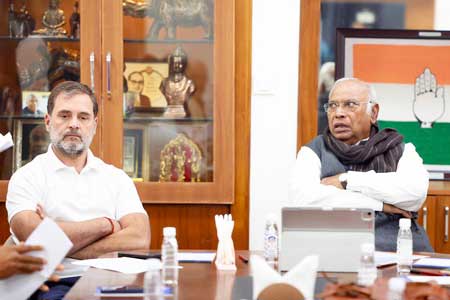
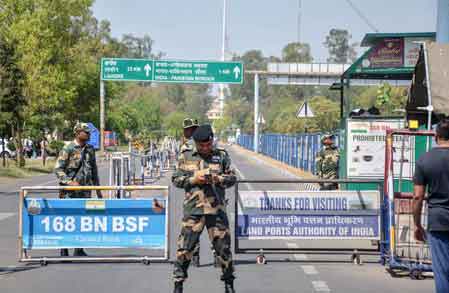
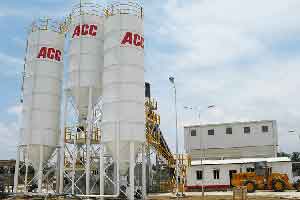
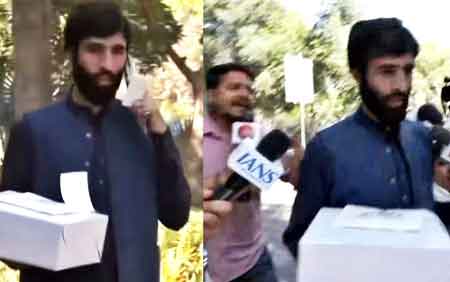
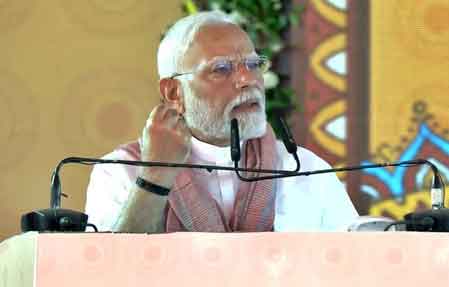
CM Dr Manik Saha emphasis on cleanliness of health centres; visits Gandhigram PHC
Chief Minister Dr Manik Saha on Thursday visited the Gandhigram Primary Health Centre and took a stock of the infrastructure and health care facilities in the Centre.
Only 66 percent households in Agartala connected with drinking water; CM Dr manic Saha instructs to expedite ongoing project work to cover more household
Chief Minister Dr Manik Saha on Thursday visited the Jal Board office here at Agartala and instructed the officials to expedite the ongoing project works for connecting more households with drinking water here in the capital town of Agartala.
India suspends visa services to Pakistani nationals with immediate effect
The Ministry of External Affairs (MEA) on Thursday announced that India has decided to suspend visa services to Pakistani nationals with immediate effect following the decisions taken by the Cabinet Committee on Security (CCS) in the wake of the Pahalgam terror attack.
Adani’s cement major ACC clocks highest-ever annual PAT at Rs 2,402 crore in FY25
Leading cement and building materials company ACC Limited on Thursday reported highest-ever annual profit after tax (PAT) at Rs 2,402 crore in FY25, up by 3 per cent.
'Celebrating bloodshed', social media fumes after man seen carrying cake to Pak High Commission
A video has emerged showing a man carrying a cake into the Pakistan High Commission in New Delhi on Thursday, just two days after the brutal terror attack that claimed the lives of 26 civilians in Jammu and Kashmir's Pahalgam and a day following India's strong diplomatic retaliation against Islamabad.
If villages are strong, India will develop faster: PM Modi on launching Rs 13,480-crore projects in Bihar
On the occasion of National Panchayati Raj Day, Prime Minister Narendra Modi addressed a massive public gathering in the Madhubani district of Bihar and inaugurated a series of development projects across key sectors, including railways, infrastructure, LPG, and rural empowerment -- collectively worth over Rs 13,480 crore.
Pahalgam attack: BJP legislators in Bengal stage protest, burn Pakistan flags in front of Assembly
BJP legislators in Bengal, led by the Leader of the Opposition in West Bengal Assembly Suvendu Adhikari, on Thursday staged protests against the Pahalgam terror attack by burning Pakistan flags in front of the House.
J&K Police announce Rs 20 lakh reward for information on Pahalgam attack terrorists
The J&K Police on Thursday announced a reward of Rs 20 lakh for anyone providing information that leads to the arrest of Pakistani nationals and local Lashkar-e-Taiba terrorists involved in the Pahalgam terror attack.